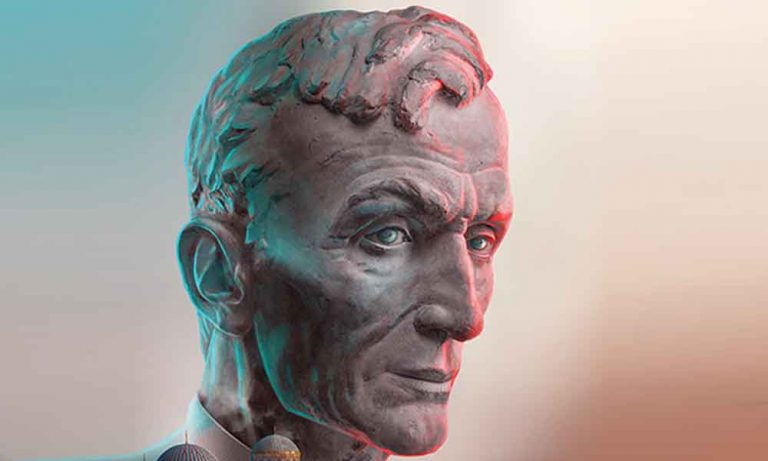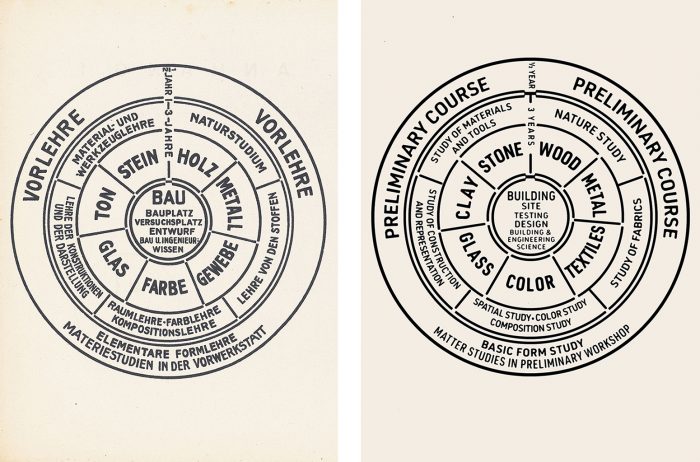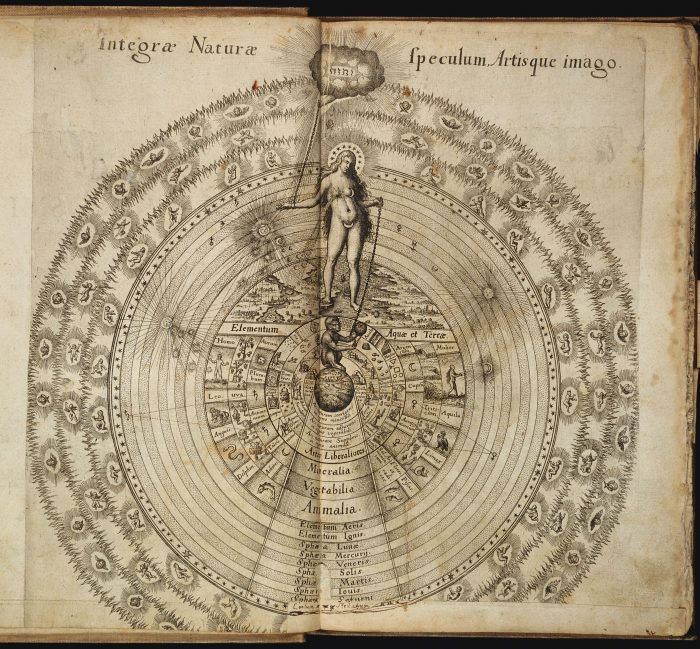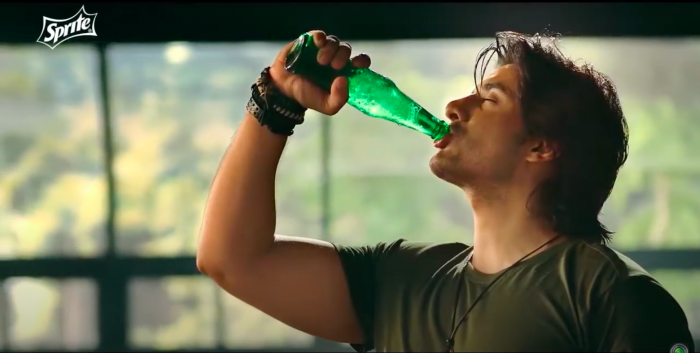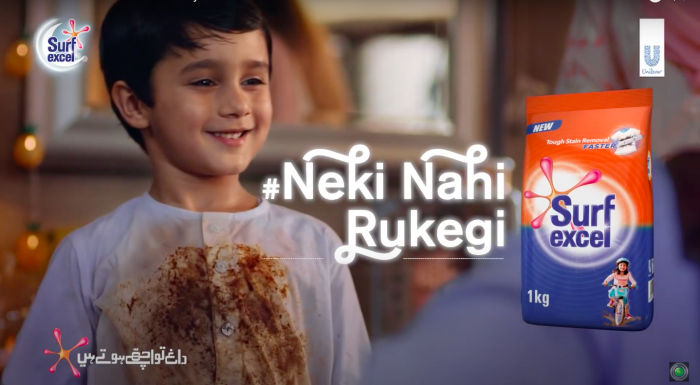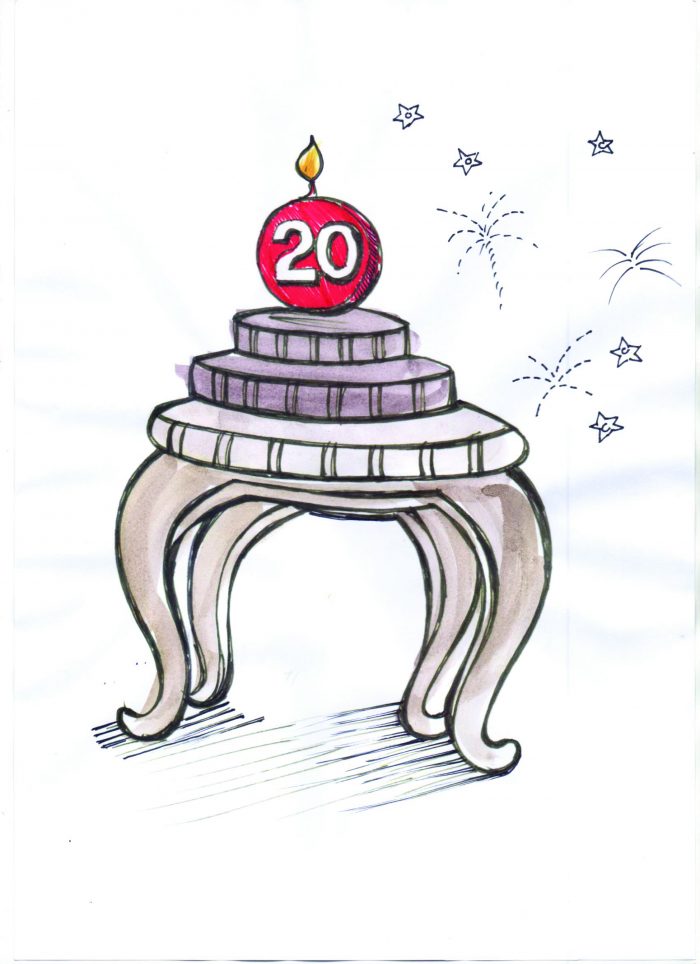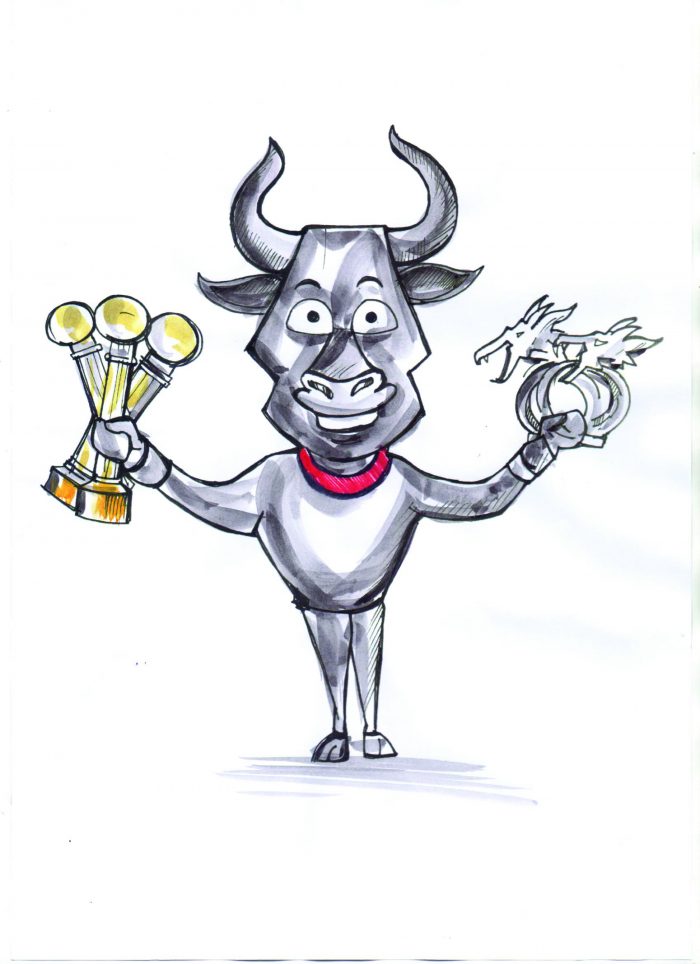SANNA MALIK: You have devised a game-changing tool for the creative communication industry. Could you tell us about Aprais and the PAS Relationship Tracker?
SUNIL GUPTA: The Aprais system is being used successfully by marketing companies and their communication agencies for over 20 years now. The ‘PAS-Relationship Tracker powered by Aprais’ is a new initiative by Aprais and PAS to assist companies and agencies in the emerging markets (in this case Pakistan) to access the benefits of a structured and professional relationship evaluation system in a ‘pilot’ manner. Though naturally limited in scope and detail compared to the ’Full Aprais’ system, it is a relatively inexpensive method to allow them to get a deeper and more objective understanding of their relationship as a prelude to adopting the ‘Full’ Aprais system used in more developed markets. The Aprais relationship evaluation system is supported by a robust and comprehensive database collated over 20 years, spanning the width and depth of marketing companies, agency networks, and global markets. It tells us that the top scoring clients achieve up to 16% better creative performance and +21% media planning from their agencies, and overall, up to 37% more value.
SANNA MALIK: How does Aprais benefit agencies and clients?
SUNIL GUPTA: On almost daily basis, we see the clients calling for competitive pitches from other agencies. This is unsettling for both parties, because agencies cannot survive without their clients’ business, while for clients, the enormous time and effort to induct a new agency into their system is often a task and a half. What is always left unsaid is how come the agency they selected (presumably through a rigorous process) some time ago has failed. The question that arises then is how can pitches be minimised and current relationships be optimised.
To answer this, we first have to understand the principles behind Aprais and client-agency relationship. The first one basic and underlying principle is that the client-agency relationship is an equal partnership since both parties bring specific skills to the task and have an equal role in the success. The second principle is that both partners should work towards a common objective – the success of the brand. Third principle is that the client drives the relationship, in as much as the agency cannot operate without directions from the client. Unclear, unfocused, changing briefs lead to unclear, unfocused and muddled thinking and work.
Underlying all these principles is a fundamental truth – all human endeavour is the result of one partnership or another, sometimes even multiple partnerships or teams. If they are strong and synergistic, they will make beautiful music. If they are dysfunctional, the satellite will not be launched successfully. For one ‘team’ to succeed over the other, the ‘teamwork’ has to be superior (the second Aprais principle).
In our sector, we are concerned about our ‘team’ (read brand) to be successful in the marketplace and the brand’s success depends not just on the marketing team, but the production, procurement, distribution, sales and communication teams all working in sync and toward the same objective. But for our purposes reference Aprais, we will confine ourselves to the marketing and communication teams. Today, companies (or brands) mostly operate in highly competitive markets wherein the functional, distributional and technological differences between brands are negligible or even non-existent. When there are no ‘rational’ reasons available for customers to choose between brands, they must find variable reasons to attract customers. These variables are almost always ‘emotional’ and subjective considerations based on factors such as brand image and ‘emotional connect’, which are used by customers to help them make choices. There is ample empirical evidence to demonstrate how the right or wrong brand image was the difference between success and failure in the marketplace.
The creation of a most subjective variable such as brand image through communication is a highly specialised function, requiring expertise that is the domain of specialist marketing (brand) communication agencies… or else the marketing companies would do it themselves. Since they do not, and entrust it to specialists, it follows that marketing companies regard (or should) the process of creating and managing brand image as being of paramount importance. Since the process is almost solely the domain of human beings (on both sides), not machines, the outcome is ‘ideas’ and it is an on-going, constant and iterative process. Common sense tells us that the subjectivity that is generated by factoring the intrinsic idiosyncrasies of human beings, the ephemeral nature of creativity and ideas (not everyone likes the ‘Mona Lisa’ but most will probably agree it is a masterpiece), and the constant pressure of having to create effective ‘ideas’, into the world of competitive marketing is a daunting task, requiring care, maturity and open minds.
Since there is so much riding on this, it should again follow that there needs to be a system in place to bring as much objectivity as possible into the process and its outcomes, without compromising the essential soul and character of creativity and this is where Aprais comes in – a proprietary tool which helps measure, evaluate, decode and if conducted regularly, continuously improve the performance of the client-agency partnership.
Why regularly? Because a client-agency relationship (like any relationship) is like a river; some smooth passages, some rocky, some definitely dangerous, some fresh, some polluted, often with changing contours but hopefully continuously flowing, because when a river stagnates, it is dead. It is important to gauge the health of the river, then, at all times, so that bottlenecks are removed, courses corrected if needed and full advantage taken of the smooth flows when they occur. White water rafting is fun, but you don’t want to be doing it every day! This is because unlike a marriage (to which the client-agency relationship has often been –incorrectly- compared), the client-agency relationship is –
- Comprised of many different personnel working at different levels and on different aspects and who, importantly, can and do keep changing over the course of time; many of them work at the real coal face, where things can get tough and dirty, unlike the pleasant confines of board rooms; thus, one person’s view, however senior he or she may be, should not be the basis of assessing the relationship; in fact, the rot often starts below;
- A commercial one with hard and measurable commercial objectives.
(Most importantly) Just like any other relationship, ultimately dependent on the behaviour and performance of both parties. It has now been proven with 99.99% statistical confidence based on over 21,000 client-agency relationship evaluations across the globe that David Ogilvy was indeed correct when he said “Clients get the advertising they deserve”. So, if everyone wants the best outcomes from the relationship, an open and honest dialogue of feedback needs to flow in both directions.
Now, a dipstick in the river may not (and usually does not) give us a representative picture of how it is evolving, and what is happening along its course. It is akin to the marketing process, which also needs constant and fresh information to enable successful decision-making, planning and execution on a dynamic basis. Marketing information collection is never only annual or limited to a single report, as it would become dated and unusable. The same holds true for the C-A relationship. It should also be evaluated and information collected on a regular basis, to allow for early warning if there are rocky passages coming up, or stagnation setting in, and to ensure that benefits of the smooth passages are maximised. An analysis of Aprais-evaluated relationships shows a clear correlation between the longevity of C-A relationships, because the process and system are transparent, objective and definitive, and accepted by both parties prior to being conducted.
SANNA MALIK: On what quantitative and qualitative parameters does the Relationship Tracker gauge the client-agency relationship?
SUNIL GUPTA: APRAIS understood right from its inception that both qualitative and quantitative parameters are required to evaluate a commercial relationship, and therefore set up a system which has those as its foundation.
Because unlike other commercial relationships between corporate entities, which may be transient/project-based (e.g. legal/medical), mechanical and repetitive (e.g. financial compliance), transactional (e.g. manufacturer-wholesaler-distributor-retailer), or with finite delivery parameters (e.g. manufacturing), the marketing company’s relationship with its communication agency/agencies is unique because it is based on an organic, fluid, constant-action dynamic and its fundamental parameters are mostly subjective. Furthermore, the commercial and human ramifications of this relationship are immense, in that it can often be the key to success or failure of companies in the marketplace, as well as make or break careers.
Today, the marketing/communication/branding sector is even more complex because of the different strands that comprise brand communication in the marketplace: besides the ubiquitous broadcast and print media, there are digital, PR, social, design, in-shop, on-premise, direct-to-customer, interactive and OOH media which are used to reach consumers, all require specialised skills. So a marketing company will probably be working with multiple agencies including production houses.
The ROI on a client-agency relationship depends on more than just quantitative parameters, because of the subjectivity in the relationships, their multiplicity and the need for synergy between all the ‘moving parts’, as one might term them.
Therefore, if there is one thing that all of us should agree on, it is that diligent, professional, objective and regular data-driven analysis and feedback based on agreed metrics, and then following-up regularly on the feedback is the only correct method for ensuring and maintaining the effectiveness and longevity of the client-agency relationship.
As to how can one effectively and objectively gauge where the relationships stand, and where are they headed? By simply ascertaining whether there are ‘gaps’ in the perception of both partners on the same variables, and if there are, how should they be minimised, if not eliminated altogether. The expression ‘being on the same page’ is reflective of this.
Thus the Aprais relationship evaluation system encompasses the following three:
- QUANTITATIVE
- A quantitative methodology to measure the scores based on questionnaires specifically related to the areas of agency expertise, as well as the client performance in their areas of responsibility.
- These questionnaires are tailored by agency type: Creative, PR, Media, etc.
Everyone who is working in that relationship is encouraged to participate. Each of the agency types will have multiple questions based on the disciplines they bring to bear; e.g. for a creative agency, the disciplines could be Account Management, Strategic Planning, Creative Development and Ideating, Financial Management, Production Management, Partnering and Collaborating etc. The client section would have multiple questions related to briefing, approvals and decision-making, partnering and collaborating, leading etc. There are multiple questions by individual discipline.
Thus, the questionnaires are comprehensive and cover every aspect of the relationship, and are a equitable barometer of the health of the relationship.
- In each questionnaire, both the client and the agency personnel score, on a scale of 100, the same questions about themselves and each other. The scale of 100 is divided into 20-point sections, each with its own denominator: Never, Seldom, Sometimes, Often, Always. Thus each question demands a specific answer and encourages the participant to think about the score he/she is giving.
Scoring Box
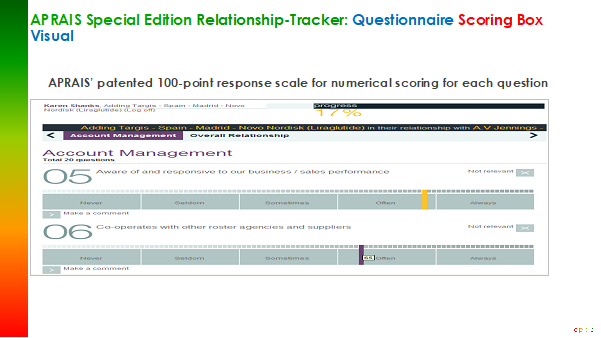
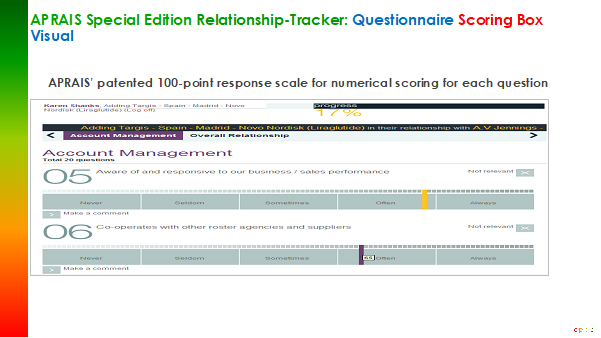
2. QUALITATIVE
It is necessary, however, that the participant also gives reasons for why that score has been given. Thus, after each question/discipline, the participant is required to write verbatim in a ‘Comment Box’ why that score has been given. This provides an essential insight into the thinking of the participant and gives a clear idea of the softer side of the relationship.
The Comment Box
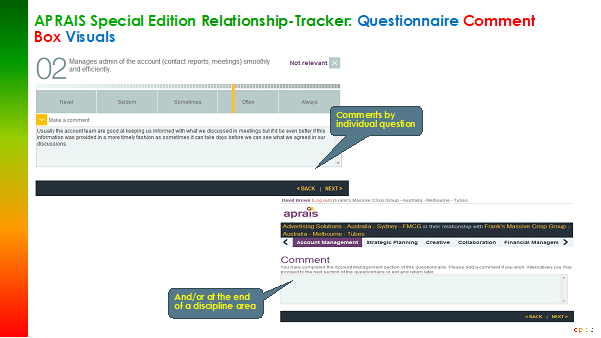
Both the qualitative and quantitative sections provide a holistic picture of the relationship, when the scores and comments given by all participants are collated into a full Relationship Report, which will have an overall score of both sidses of the relationship on a scale of 100. A score under 70 means that there are issues that need to be addressed. There are also scores by individual question and discipline. These overall scores are benchmarked against best practice in relevant areas, such as global, marketing sector, marketing company network, agency sector, region, agency network etc., which are culled from the database mentioned earlier.
3. STRUCTURE OF THE SURVEY
It must be emphasised that the evaluation system is completely online and confidential, with the structured questionnaire which has been agreed by both partners beforehand. Both the performance of the agency and the performance of the client team are evaluated. Participants of agency and client team receive a personalized invitation by email with a link to the questionnaire.
The Survey Results Report is provided in PowerPoint format and shows the results anonymously and separately for agency and client teams. It includes the unique industry benchmarks from the global Aprais database. Praise, but also opportunities to improve are clearly shown for both teams, agency and client.
The results and the feedback provided are to be discussed with both teams, and an appropriate action plan to address issues is also presented (if the partners request Aprais to moderate and facilitate the discussion), for a continuous, partnership-based relationship and cooperation that makes everyone happier and thus creates the best ongoing working relationship. (‘Full Aprais’ also provides insights into the ‘softer values’ or ‘behaviours’ of the relationship, such as accountability, trust and resilience.)
SANNA MALIK: Pakistan is a price-sensitive industry, where accounts are won on the basis of low-cost solutions by the majority of local agencies. The agency depends on the competence of a small team versus an adequately staffed team, which makes deliverables challenging to execute. Similarly, local clients may not be well-versed in briefing creative agencies on deliverables. How does the Relationship Tracker fit into such a culture?
SUNIL GUPTA: There are a few points to be noted here. Firstly, the ‘PAS Relationship Tracker powered by Aprais’ is an introductory version of ‘Full Aprais’, developed specifically for use in developing, price-sensitive markets. The issues of ‘low price’ driving agency selection and ‘master-servant’ relationships are not new or confined to Pakistan. They are prevalent across the globe, as we have witnessed, and I personally have experienced when I was in the advertising industry. So yes, maturity is required, but so is common sense. As John Ruskin, an English writer, philosopher, art critic and polymath of the Victorian era, famously said: “There is hardly anything in the world that someone cannot make a little worse and sell a little cheaper, and the people who consider price alone are that person’s lawful prey. It’s unwise to pay too much, but it’s worse to pay too little. When you pay too much, you lose a little money — that is all. When you pay too little, you sometimes lose everything, because the thing you bought was incapable of doing the thing it was bought to do. The common law of business balance prohibits paying a little and getting a lot — it can’t be done. If you deal with the lowest bidder, it is well to add something for the risk you run, and if you do that you will have enough to pay for something better.”
- In the marketing sector context, if the client thinks how much he is spending on brand communications, what his brand is worth, how important it is for him and his company for the brand to succeed and how dependent the brand is on the quality of brand communications, settling for a low-cost agency cannot make common or business sense! It will simply not be able to afford quality personnel to craft the work. That is the basic rule of economics. So you are jeopardising millions of rupees in ad costs, billions perhaps in brand value, to save thousands in agency fee. What sort of businessperson are you?
- Furthermore, many clients do not make use of Aprais’ services because they say it is expensive. The fact of the matter is that Aprais actually costs less than 0.1% of the budgets that the marketer has allocated to advertising. Why would you not spend that little to ensure that 99.9% of the ad budgets are being optimally utilised?
- 9% is also the level of statistical confidence, proven from our database, with which APRAIS can attest to what David Ogilvy said many years ago: “Clients get the advertising they deserve.” It relates not just to costs, but the quality of briefing, decision-making and professional respect Clients give their Agencies.
- Lastly, let me tell you a personal story to illustrate what should be done if a client wants to move his business because of pricing. It may help illustrate that unless you yourself have pride in your work, and self-respect, why would anyone else respect you?
This story is from many years ago when I was leading one of India’s largest agencies in Delhi. I was informed that this client wanted to give his business (a relatively new brand) to another agency, so I went to meet him. It was not an MNC, but a medium-sized indigenous company. He met me with his whole team, including his family. What do you think (and I’m sure he thought) I was going to say/request? Not to take his business away and that I personally would ensure better work etc. etc.? Actually I said quite the opposite: that it was his prerogative to take his business where he chose, but after he did, to keep the brands with that agency for a period of time because brands are like children who need constant and consistent nurturing if they are to grow strong and successful.
That client is still with my ex-agency after 25 years. I recount this not for any other reason except to point out that agencies need to show spine, and clients need to show maturity. More than myself, I must commend that client on the maturity he displayed, because it is not easy for a business tycoon to accept what was effectively a strong riposte from someone he’s hired to do something, and in front of his team.
SANNA MALIK: How can we evaluate the effectiveness of the Tracker and what should be the next step for clients and agencies in case the tracker does not solve the identified challenges?
SUNIL GUPTA: APRAIS does not provide ‘solutions’. It provides a guide and insights into what needs to be improved/strengthened/nurtured, because it does not only identify the weak spots but also the strong areas of a relationship. At best APRAIS can only suggest actions to be undertaken, but the solutions and actions need to come from the partners themselves. They need to agree on how, when and who will undertake the actions suggested by APRAIS, and indeed may also come up with their own ideas and actions. And then they need to follow up to monitor those actions.
There is a mechanism to gauge whether APRAIS has been effective, and it is simply called ‘regular evaluation’. As said before, you need to keep ensuring that the actions identified have been carried out, so that the next time (we suggest every 6 months) the survey is undertaken, you can compare the previous scores with the new ones on exactly the same parameters. Only if done regularly will you get continuous improvement.
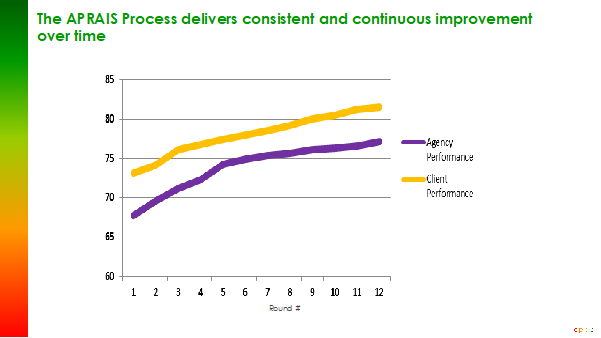
SANNA MALIK: What has been PAS’ role in establishing the Aprais Tracker in Pakistan?
SUNIL GUPTA: PAS has been a pioneer in bringing best practice and systems to the Pakistan marketing and communication sector for many years, especially since the dynamic and far-sighted Qamar Abbas took over as Executive Director in 2006. He has been responsible in bringing world-class professional training programs, seminars, awards and interactions with global leaders to Pakistan. He has always seen the potential of APRAIS for helping improve Client-Agency relationships, so when we introduced the Tracker, he immediately recognised it could be a game-changer in the price-sensitive market, and we have been working closely together with our offices in the UK and Germany to launch the Tracker in Pakistan. PAS is therefore a torch-bearer for more professional business practices in Pakistan, and we see it being the driving force of the Tracker as well.


